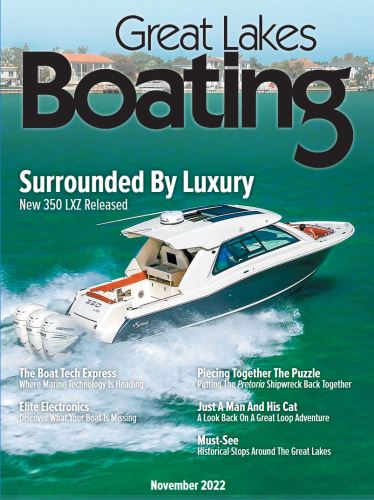.jpg_1600.jpg)
The Great Lakes Commission (GLC) announces $2.2 million in grants to reduce the runoff of sediment, nutrients, and other pollutants into the Great Lakes. This runoff has economic and environmental impacts and contributes to the formation of harmful algal blooms and dead zones in the lakes. Grant recipients will use the funding to install structural or engineered controls and annual practices that emphasize long-term sustainability to limit sediment or nutrient runoff.
“Protecting water quality across the Great Lakes requires working closely with local partners to implement solutions,” said John Linc Stine, chair of the GLC and former commissioner of the Minnesota Pollution Control Agency. “This program enables communities to take creative approaches and direct action designed to promote sustainable change to reduce nonpoint sources of phosphorus.”
Funding for the Great Lakes Sediment and Nutrient Reduction Program is provided by the U.S. Department of Agriculture – Natural Resources Conservation Service (NRCS) under the Great Lakes Restoration Initiative (GLRI). The GLRI is a U.S. Environmental Protection Agency (U.S. EPA)-led initiative designed to accelerate efforts to protect and restore the largest surface fresh water system in the world — the Great Lakes.
Grants totaling $2.2 million were awarded to the following recipients:
- Lenawee Conservation District, Michigan – $190,000 for erosion control
- Macatawa Area Coordinating Council, Michigan – $190,000 for sediment and phosphorus reduction
- Michigan State University, Michigan – $72,450 for riverbank restoration
- Cook County Soil and Water Conservation District, Minnesota – $200,000 for green stormwater infrastructure
- Allegany Soil and Water Conservation District, New York – $89,729 for streambank stabilization
- Allegany Soil and Water Conservation District on behalf of Genesee River Watershed Coalition of Conservation Districts, New York – $200,000 for streambank erosion remediation
- Center for Environmental Initiatives, New York – $196,704 for riverbank restoration
- Blanchard River Watershed Partnership, Ohio – $142,020 for nutrient tracking
- Chagrin River Watershed Partners, Ohio – $194,278 for streambank stabilization
- Lucas County Engineers’ Office, Ohio – $200,000 for structural installation and sediment removal
- Ottawa Soil and Water Conservation District, Ohio – $170,043 for nutrient trapping
- Hyslop Foundation, Inc., Wisconsin – $154,830 for wetland restoration
- Outagamie County Land Conservation, Wisconsin – $199,946 for conservation practice enrollment
For more information, contact Nicole Zacharda, program manager, at nzacharda@glc.org or 734-971-9135.

